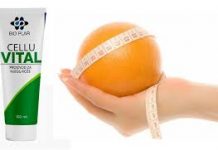As defined by the World Health Organization (WHO), “a generic product is a pharmaceutical product that can be used interchangeably with a reference product used in bioequivalence studies, usually produced without a license from the originator drug manufacturer and marketed after the expiry of a patent or other exclusive rights” . The WHO suggests that a better term than “generic drug” would be “multisource pharmaceutical product”. On the other hand, the Pharmaceutical Law Act of September 6, 2001, as amended, in force in our country. d. defines a generic medicine as “a medicinal product having the same qualitative and quantitative composition of active substances, the same pharmaceutical form as the reference medicinal product and whose bioequivalence to the reference medicinal product has been confirmed by appropriate bioavailability studies”.
Generic drug nomenclature
The naming of generics may be as follows:
- Brand-name generic drugs, that is, under their own trade name;
- Semi-branded generic drugs, i.e. under the manufacturer’s name preceded by the name of
- the active substance,
- Non-brand generic drugs, ie under the International Nonproprietary Name (INN).
In addition, Polish legal regulations allow the patient to change preparations. The patient may ask the pharmacist to dispense a preparation other than the one prescribed by the doctor on the prescription (apart from the existing restrictions, eg when the prescription shows the annotation “Nz”, which means: do not change!). However, the equivalent must meet several requirements: it must contain the same active substance and dose, be in the same form or in a similar form that does not cause any therapeutic differences, and have the same therapeutic indication. It would also be a good idea to write on the international prescription of the active substance, the use of which the doctor wants to recommend to the patient, specifying the pharmaceutical form, dose, route of administration and amount of the drug. The introduction of this so-called “Generic prescription” would make the patient choose a drug from the pharmacist rather than the doctor.
Why are generics cheaper than the original drugs and how are they marketed?
An important element supporting the use of generic drugs is their price – they are much cheaper than innovative drugs. It is estimated that the cost of purchasing the cheapest generics does not exceed 10% of the original price of the original drug. The lower price of generic drugs depends on many factors, including the fact that the companies producing these drugs do not have to carry out as many preclinical and clinical trials on animals and humans as innovative companies, which does not require such a large financial outlay. The bioequivalence studies carried out at this point in time generate significantly lower costs. After all, the length of the research conducted also contributes to the reduction of costs related to the production of drugs.
The average time of work on an innovative drug is approx. 10–12 years. Of the thousands of pre-selected chemicals, many are eliminated at different stages of the research process. Hundreds of substances are tested in preclinical studies, and then over a dozen of them in a clinical trial. Ultimately, at most a few, and sometimes only one, originally selected compounds enter the pharmacy market. The development time for a generic drug is much shorter and ranges from 2 to 5 years. So the savings for generics are much higher.



